Do you have a question about the ASROCK B660M-HDV and is the answer not in the manual?
Lists all items included with the motherboard package.
Details the technical specifications of the ASRock B660M-HDV motherboard.
Illustrates the physical arrangement of components and connectors on the motherboard.
Describes the rear input/output ports available on the motherboard.
Important safety and handling guidelines before installing motherboard components.
Step-by-step guide for safely installing the CPU onto the motherboard socket.
Instructions for mounting the CPU cooler assembly onto the motherboard.
Guide for correctly inserting DDR4 RAM modules into the motherboard slots.
Information on the PCIe slots and their intended use for expansion cards.
Explanation of jumper configurations, specifically the Clear CMOS jumper.
Details about internal headers for front panel connections, USB, audio, and fans.
Steps for installing an M.2 WiFi/BT module onto the motherboard.
Instructions for installing an M.2 SSD into the M2_1 slot.
Instructions for installing an M.2 SSD into the M2_2 slot.
Guide on installing necessary drivers from the support CD or ASRock utilities.
Overview of ASRock's A-Tuning utility for system monitoring and control.
Information on using ASRock's platform for software updates and application downloads.
Explains how to enter and navigate the UEFI BIOS setup utility.
Describes the simplified BIOS interface for quick system status checks.
Details the menu bar and navigation keys for the advanced UEFI BIOS settings.
Displays the system information and allows management of favorite BIOS items.
Covers CPU and DRAM overclocking configurations and settings.
Provides access to detailed system configurations like CPU, Chipset, and Storage.
Details various CPU-related settings including core control and power management.
Explains settings related to the motherboard chipset and PCIe configurations.
Manages SATA and M.2 storage device settings and configurations.
Settings for Super IO devices like serial ports and PS/2.
Configures Advanced Configuration and Power Interface settings for power management.
Settings for USB support, including legacy support and XHCI hand-off.
Manages BIOS support for security devices like TPM.
Access to system tools like RAID installer, Secure Erase, and UEFI update.
Displays system hardware status, including temperatures, fan speeds, and voltages.
Manages system passwords, secure boot, and Intel PTT settings.
Configures boot order, boot options, and CSM settings.
Options for saving or discarding changes and exiting the UEFI setup utility.
Lists all items included with the motherboard package.
Details the technical specifications of the ASRock B660M-HDV motherboard.
Illustrates the physical arrangement of components and connectors on the motherboard.
Describes the rear input/output ports available on the motherboard.
Important safety and handling guidelines before installing motherboard components.
Step-by-step guide for safely installing the CPU onto the motherboard socket.
Instructions for mounting the CPU cooler assembly onto the motherboard.
Guide for correctly inserting DDR4 RAM modules into the motherboard slots.
Information on the PCIe slots and their intended use for expansion cards.
Explanation of jumper configurations, specifically the Clear CMOS jumper.
Details about internal headers for front panel connections, USB, audio, and fans.
Steps for installing an M.2 WiFi/BT module onto the motherboard.
Instructions for installing an M.2 SSD into the M2_1 slot.
Instructions for installing an M.2 SSD into the M2_2 slot.
Guide on installing necessary drivers from the support CD or ASRock utilities.
Overview of ASRock's A-Tuning utility for system monitoring and control.
Information on using ASRock's platform for software updates and application downloads.
Explains how to enter and navigate the UEFI BIOS setup utility.
Describes the simplified BIOS interface for quick system status checks.
Details the menu bar and navigation keys for the advanced UEFI BIOS settings.
Displays the system information and allows management of favorite BIOS items.
Covers CPU and DRAM overclocking configurations and settings.
Provides access to detailed system configurations like CPU, Chipset, and Storage.
Details various CPU-related settings including core control and power management.
Explains settings related to the motherboard chipset and PCIe configurations.
Manages SATA and M.2 storage device settings and configurations.
Settings for Super IO devices like serial ports and PS/2.
Configures Advanced Configuration and Power Interface settings for power management.
Settings for USB support, including legacy support and XHCI hand-off.
Manages BIOS support for security devices like TPM.
Access to system tools like RAID installer, Secure Erase, and UEFI update.
Displays system hardware status, including temperatures, fan speeds, and voltages.
Manages system passwords, secure boot, and Intel PTT settings.
Configures boot order, boot options, and CSM settings.
Options for saving or discarding changes and exiting the UEFI setup utility.
| Processor socket | LGA 1700 |
|---|---|
| Processor manufacturer | Intel |
| Compatible processor series | Intel Celeron, Intel Core i3, Intel Core i5, Intel Core i7, Intel Core i9, Intel Pentium |
| Maximum number of SMP processors | 1 |
| Audio chip | Realtek ALC887 / Realtek ALC897 |
| Component for | PC |
| Motherboard chipset | Intel B660 |
| PC health monitoring | CPU, FAN, Temperature, Voltage |
| Audio output channels | 7.1 channels |
| Motherboard form factor | micro ATX |
| Windows operating systems supported | Windows 10 x64, Windows 11 x64 |
| Memory channels | Dual-channel |
| Memory slots type | DIMM |
| Unbuffered memory | Yes |
| Number of memory slots | 2 |
| Supported memory types | DDR4-SDRAM |
| Maximum internal memory | 64 GB |
| Supported memory clock speeds | 5066 MHz |
| Cables included | SATA |
| DisplayPort version | 1.4 |
| DVI-D ports quantity | 0 |
| USB 2.0 ports quantity | USB 2.0 ports have a data transmission speed of 480 Mbps, and are backwards compatible with USB 1.1 ports. You can connect all kinds of peripheral devices to them. |
| USB 3.2 Gen 1 (3.1 Gen 1) Type-A ports quantity | 3 |
| Number of SATA III connectors | 4 |
| Maximum resolution | 7680 x 4320 pixels |
| Parallel processing technology support | - |
| RAID levels | 0, 1, 5, 10 |
| Supported storage drive types | HDD & SSD |
| Supported storage drive interfaces | M.2, SATA III |
| Wi-Fi | No |
| LAN controller | Intel® I219-V |
| Ethernet interface type | Gigabit Ethernet |
| BIOS type | UEFI AMI |
| ACPI version | 6.0 |
| BIOS memory size | 128 Mbit |
| System Management BIOS (SMBIOS) version | 2.7 |
| Harmonized System (HS) code | 84733020 |
| Weight | 865 g |
| Depth | 201 mm |
|---|---|
| Width | 244 mm |
| Height | 70 mm |
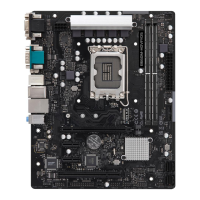

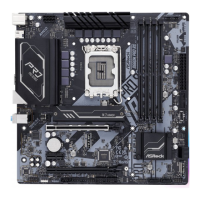
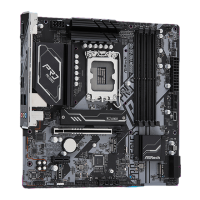
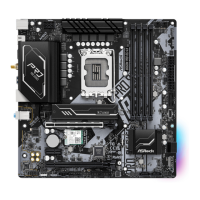
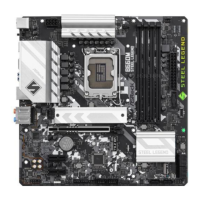
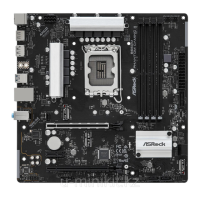
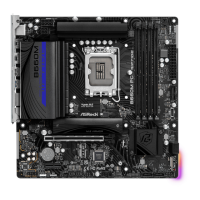
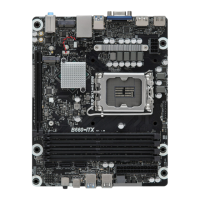
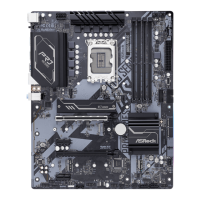

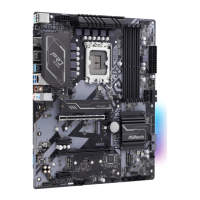
